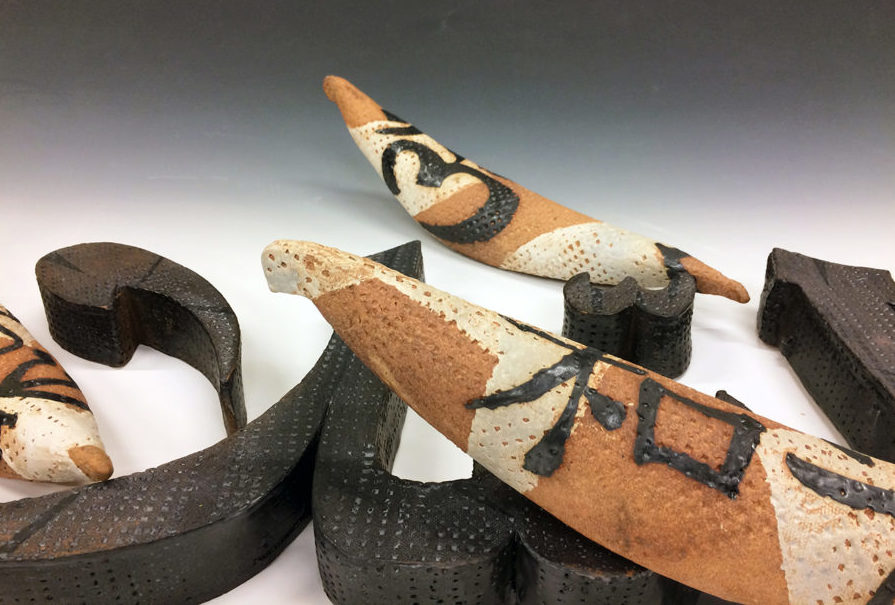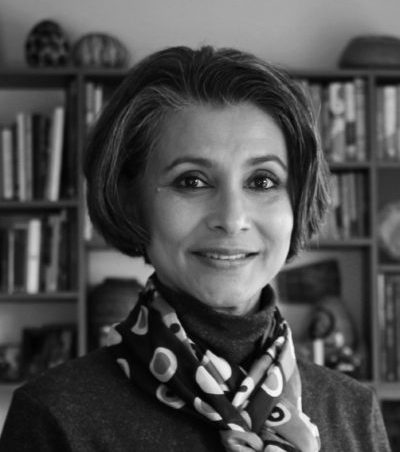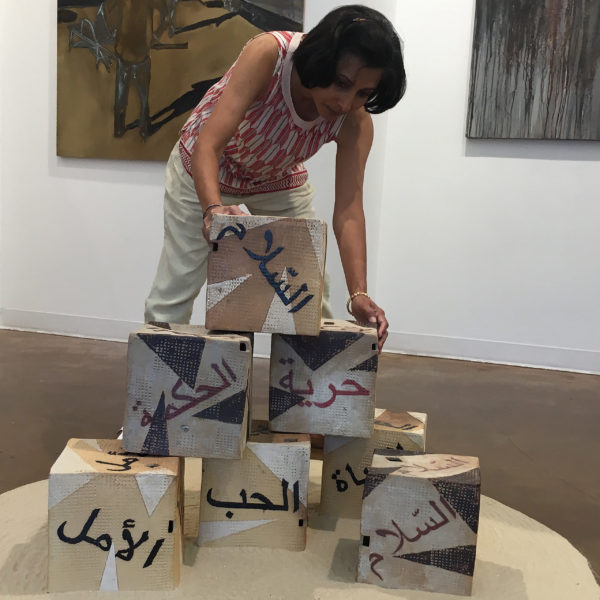
When Vidya Vijayasekharan presses her hands into fresh, moist clay, she experiences an organic connection to the earth.
The pigment and texture speak to her about where the clay originated — the yellow-brown sienna slab is from Tuscany while a white clay called kaolin derives from China. The red earth of West Bengal provides the color for terra cotta pots.
Just as vintners discuss the terroir of grapes for wine, Vijayasekharan seeks out clays from various regions around the world for their distinctive colors and textures.
The Potomac-based artist has been creating in clay for more than a decade, molding unique pieces that simultaneously function as plates, vases and cups and emanate exquisitely designed artistic statements, reflecting and responding to her love of the minimalism and abstraction of Japanese clay traditions.
“Clay is one of those materials that gives you the freedom to individualize through your hand,” Vijayasekharan explained. “You’re touching it, manipulating it, feeling the earth … [leaving] your fingerprints on it. It moves from plastic — in the sense of modeling or molding — to becoming a solid form once it’s baked in the kiln.
“A [clay] piece goes through so many processes,” she noted, “that it’s literally, to me, a metaphor for the human condition, because in every place in the world, maybe short of Antarctica, there is clay, and depending on the geology of the place, the clay is unique … just as every culture is unique.”

Vijayasekharan is from the southern-most tip of India, but as a child moved around the diverse country with her civil servant father, living in many regions and experiencing numerous cultures. In college there was pressure for her to become a doctor: “When I was young, biology was my favorite subject, so the assumption was that I would become a physician because there were doctors in the family … but I’m terrified of blood!” Ultimately, she found her way to art through a focus on art history, completing her studies with a master’s degree in art history from Temple University. Although the shift sounds surprising, Vijayasekharan recalled that when young, “The margins of all my notebooks were full of doodles and I used to love drawing. I became fascinated by catalogs that would come in the mail for sewing … and I absolutely loved comic books.”
After receiving her degrees, she worked at the Sackler Gallery — now the National Museum of Asian Art. Then Vijayasekharan began teaching art history at Montgomery College’s Rockville campus. “My students come from over a hundred countries. Some of them identify by gender, some by age, some by sexuality, some by learning disabilities and learning styles.
And who are we then? This [question] is something that has constantly driven me because when I was young and growing up, I felt that I never really fit into any category.”
“So when I make my art,” she said, “what I’m trying to address are those universalities that we all face in life. Not the differences. I think about what gives all of us joy. What makes us sad? What brings out emotions of anger or jealousy? These are the universalities.”
Over the years Vijayasekharan has shown her works at Montgomery College, the Betty Mae Kramer Gallery, Sandy Spring Museum, Blackrock Center all in Montgomery County, as well as at Touchstone Gallery in Washington, D.C., and Towson University.
Vijayasekharan cites travel, food and her expertise in art history as inspirations. “I’m a big foodie,” she admitted. “It’s something that connects all of us. Just think of how many cuisines have noodles, pasta, from Asia, from Europe. And how many dumplings you see all over the world — you have samosas and dumplings, ravioli and knishes ….” She sees a similar universality in clay and ceramics.
In her 2017 sculpture “Horae,” she drew on her art history studies to reflect ideas of the ancient Greek goddesses who set the seasons, imbuing them with peace, order and justice. The work features textured stoneware shapes in earth tones stamped with Arabic, Hebrew, Mandarin and Sanskrit words for peace and justice. “Calligraphy means beautiful writing. So whether it’s Hebrew or Mandarin script or Latin or Arabic,” she said, the piece reflects the time we’re living in, while also featuring the beautiful scripts in different languages.
Clay, the artist notes, is among the oldest materials humans have used to express themselves artistically, second only to drawing. But she reflects on the state of pottery in her native India where in the past it was not considered an artform, she said, adding, “I feel terrible that here I am making clay objects that are considered works of fine art, when these craftsmen [in India], who came from centuries and centuries of tradition, [were] making things that [weren’t] considered art. Literally we call it a potter’s grave” when someone unknown or too poor for a funeral is buried in a common grave. That, she said, was the status of potters in India in previous centuries.

When creating new pieces, Vijayasekharan, mother of two adult children, works in the pottery studio on Montgomery College’s Rockville campus. She loves the uncertainty that occurs when something goes into the kiln. “A variation in color happens because something was placed in different parts of the kiln,” she explained. “The way the fire and the temperature hit a piece changes the color. That has nothing to do with me as an artist. That’s all what happened with the ‘kiln gods.’”
In her 2018 “Hesperides,” Vijayasekharan created a triptych of three stoneware glazed vessels pigmented with turmeric, paprika and coffee, adorned with gold leaf gilding the insides. The trio of shapes feels both organic and geometric, and there’s an interplay of inside and outside. The variations of colors, textures and origins of the raw materials were selected to underscore the complexity of personal identity, migration and cross-cultural exchanges, the artist said.
The piece, punctuated with textural striations and organic shapes, pays homage to Shakti, the Hindu female power. On creating “Hesperides,” Vijayasekharan said, “When I used these colors, I was just blown away by how unified they are in the color scheme. There was this an earthy brown, a brilliant orange-ish red of the pepper and that gold of the turmeric. That’s why I called it ‘The Hesperides,’ the goddesses of the sunset.”
For more information of Vidya Vijayasekharan, visit https://vidyav.com/home.html




